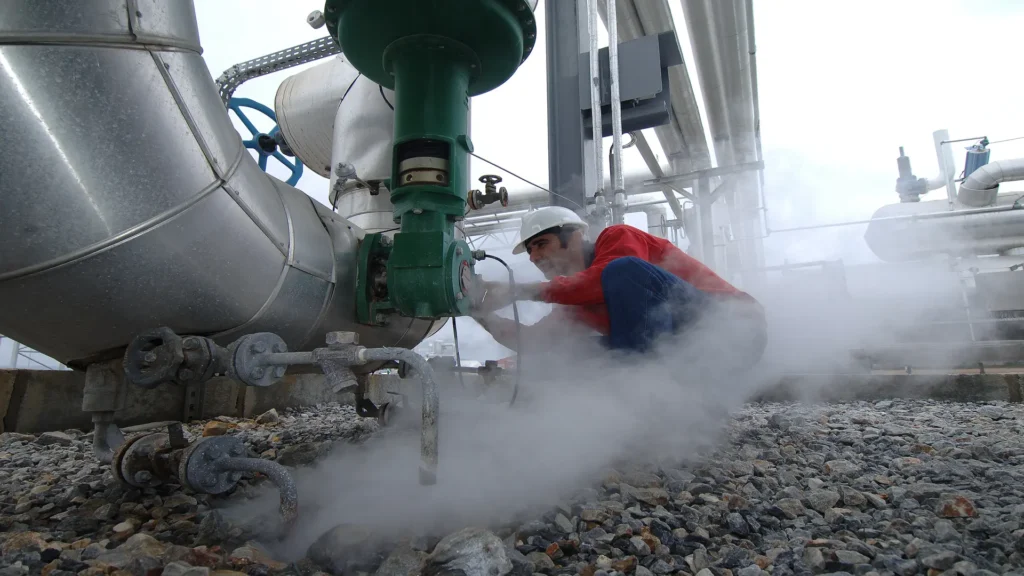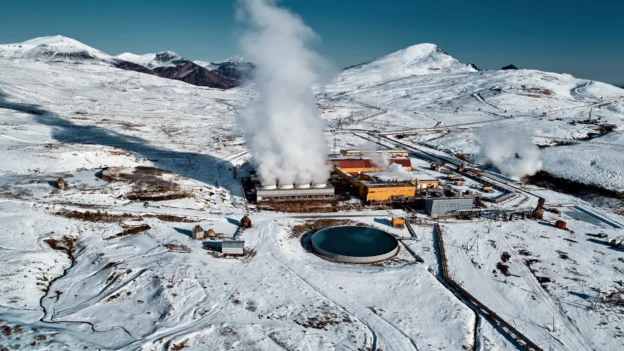Table of Contents
- Introduction
- What Is Geothermal Energy and How Does It Work?
- What are the pros and cons of geothermal energy?
- Key Benefits of Geothermal Energy: Pros Explained
- Sustainability of Geothermal Energy: Low Environmental Impact and Renewable Resource
- Reliability of Geothermal Energy: Providing Constant, Uninterrupted Power
- Geothermal Energy Efficiency: High Conversion Rate of Heat into Electricity
- Reduced Emissions of Geothermal Energy: A Comparison with Other Energy Sources
- Direct Use of Geothermal Heat: Practical Applications in Heating, Agriculture, and Balneology
- Challenges and Cons of Geothermal Energy
- Upfront Costs of Geothermal Energy: High Investment in Infrastructure and Drilling
- Geographic location: Geographic constraints to the feasibility of geothermal projects
- Geological Risks of Geothermal Energy: Seismic Effects and Resource Management
- Environmental Impact of Geothermal Energy: Hot Springs Management and Potential Contaminants
- Technology and Development in Geothermal Energy: Improving Efficiency and Reducing Costs
- Key Benefits of Geothermal Energy: Pros Explained
- Benchmarking the Pros and Cons of Geothermal Energy Against Other Energy Sources
- Feasibility of Geothermal Energy: A Viable and Sustainable Solution
- Conclusion
- References
Introduction
Geothermal energy is a sustainable and renewable resource that uses the Earth’s heat to generate electricity. While it offers many advantages, such as low operational costs and a minimal carbon footprint, it also has some significant disadvantages, including high upfront costs and geographic limitations.
In this article, a comprehensive analysis of the pros and cons of geothermal energy is made on its benefits, challenges, and feasibility in the global energy landscape.
What Is Geothermal Energy and How Does It Work?
Geothermal energy is a branch of geophysical science dedicated to the study of the thermal conditions of the Earth. One of the most remarkable fruits of the technique is the extraction of geothermal energy.
Imagine the Earth as a giant boiling pot. At the bottom, like fire, is magma, a molten, fiery rock that gives off incredible heat, even more than the surface of the sun. That heat is like a treasure trove that we can use to generate electricity! But how does it work?
It’s as if we drill a deep well into the Earth to get to that treasure trove of heat. The deeper we go, the more heat we find. That heat from underground heats water, turns it into steam, and wham, that steam turns a turbine on the surface like a windmill, but instead of wind, it uses steam! And so, the turbine generates electricity that we can use at home, at work or wherever.
In short, this energy takes advantage of the heat inside the Earth, generated by the radioactive disintegration of elements present in the rocks and the movement of the tectonic plates. This heat manifests itself in the form of steam, water, and hot rocks, which can be used to generate electricity, heating, cooling, and other applications.
What are the pros and cons of geothermal energy?
Geothermal energy is extracted by harnessing the natural heat of the Earth’s interior. This process generally involves drilling wells to access subway reservoirs of hot water or steam, which is then used to drive electricity-generating turbines. In addition, geothermal heat can be used directly for heating in residential, commercial, and industrial applications. Below, we will explore the benefits and challenges of geothermal.
Key Benefits of Geothermal Energy: Pros Explained
Sustainability of Geothermal Energy: Low Environmental Impact and Renewable Resource
One of the main benefits of this energy is its sustainability. Unlike fossil fuels, it is considered an inexhaustible source of energy, as long as it is properly managed. Geothermal systems have a low environmental impact, as they emit very few greenhouse gas emissions compared to fossil fuel-based power plants.
Reliability of Geothermal Energy: Providing Constant, Uninterrupted Power
Geothermal energy is extremely reliable. Unlike solar and wind energy, which are dependent on weather conditions, geothermal energy can provide a constant and uninterrupted source of energy throughout the year. This reliability is crucial to ensure a stable and predictable energy supply.
Geothermal Energy Efficiency: High Conversion Rate of Heat into Electricity
Geothermal systems are highly efficient in converting heat into electricity. Geothermal plants can achieve conversion efficiencies of over 90%, which means that a large portion of the extracted heat is converted into useful energy. This high efficiency translates into lower operating costs and improved energy efficiency. Figure 1 shows an equipment operator checking the actuator of a control valve of the geothermal power plant located in Turkey (Denizli), which operates with geothermal energy.

Reduced Emissions of Geothermal Energy: A Comparison with Other Energy Sources
Compared to other energy sources, geothermal generates significantly lower emissions of carbon dioxide and other pollutants. This makes geothermal plants a much cleaner and environmentally friendly option, contributing to the reduction of the carbon footprint.
Direct Use of Geothermal Heat: Practical Applications in Heating, Agriculture, and Balneology
Geothermal heat can be used directly for heating without the need to convert it into electricity. This direct use includes practical applications in heating buildings, agricultural greenhouses, and spas. Harnessing the heat directly can be more efficient and less costly than conversion to electricity.
Challenges and Cons of Geothermal Energy
Upfront Costs of Geothermal Energy: High Investment in Infrastructure and Drilling
One of the biggest challenges of geothermal is the high upfront costs associated with infrastructure and drilling. Exploration and development of geothermal sites require significant investments, which can be a barrier to large-scale adoption.
Geographic location: Geographic constraints to the feasibility of geothermal projects
The feasibility of geothermal projects is limited by geography. Not all regions have access to adequate geothermal resources. The areas with the greatest geothermal potential are usually located in tectonically active areas, which restricts the application of this technology to certain locations that cannot be transported.
Geological Risks of Geothermal Energy: Seismic Effects and Resource Management
The extraction of this energy may involve geological risks, including potential seismic effects. Injection and extraction of fluids in the subsurface can induce earthquakes, raising concerns about the safety and sustainable management of geothermal resources.
Environmental Impact of Geothermal Energy: Hot Springs Management and Potential Contaminants
Although geothermal has a relatively low environmental impact, the management of hot springs and other by-products can present challenges. It is crucial to properly manage these resources to avoid water and soil contamination.
Technology and Development in Geothermal Energy: Improving Efficiency and Reducing Costs
Continued development of geothermal technologies is necessary to improve efficiency and reduce costs. Innovation in drilling techniques and energy conversion systems can make geothermal more accessible and competitive in the energy market.
Benchmarking the Pros and Cons of Geothermal Energy Against Other Energy Sources
Benchmarking is a valuable tool for the comprehensive evaluation of this energy. It allows for comparing the performance of this energy source with other available options and thus making informed decisions on its use and development. By conducting rigorous benchmarking, areas for improvement can be identified, performance standards can be established, and best practices in the geothermal industry can be promoted. The following table summarizes the advantages and disadvantages of geothermal energy compared to other energy sources:
| Energy Source | Advantages | Disadvantages |
| Geothermal energy | Renewable, low environmental impact, reliable, efficient, versatile, energy independence, job creation. | High initial cost, potential impacts on the environment, location dependency, odors and noise, space requirements, water management. |
| Fossil fuels | Abundant, low initial cost. | High emission of greenhouse gases and atmospheric pollutants, non-renewable, significant environmental impact, import dependence. |
| Solar energy | Renewable, low environmental impact, low operation and maintenance cost. | Intermittent, depends on weather conditions. |
| Wind power | Renewable, low environmental impact, low operation and maintenance cost. | Intermittent, depends on weather conditions, high initial cost, visual and acoustic impact. |
| Hydroelectric power | Renewable, reliable, efficient. | impact on riverine ecosystems, costly construction of dams with social impact, limited availability of suitable sites. |
Feasibility of Geothermal Energy: A Viable and Sustainable Solution
As a result of this assessment, we have that geothermal presents itself as an attractive energy alternative due to its multiple advantages or pros. The following is an analysis of the factors that determine its viability:
Economics of Geothermal Energy: Costs and Benefits
- Long-term costs: geothermal offers low operating costs, compensating for its high initial investment. In the long term, it is more economical than other energy sources.
Examples and Prospects of Geothermal Energy Development
- Successful projects: Geothermal plants in Iceland, New Zealand, and the United States demonstrate the feasibility and potential of this technology.
- Promising future: Increased investments and technological advances expand the application possibilities for geothermal.
Policies and Subsidies for Geothermal Energy
- Governmental impetus: Government policies and subsidies are essential for geothermal development.
- Financial incentives: Financial incentives and favorable regulations encourage investment and growth of this energy source.
In summary, geothermal energy is positioned as a viable, sustainable option with a promising future in the energy landscape. If this is so, why is it not being harnessed for the most part? See the video below for the answer. Source: DW Planet A.

Geothermal energy is renewable and powerful. Why is most of it untapped?
Conclusion
This type of energy offers a number of significant benefits, including its sustainability, reliability, and energy efficiency. However, it also faces significant challenges, such as high upfront costs and geographic limitations. Despite these obstacles, the long-term viability of geothermal is promising, especially with the support of government policies and technological advances. Ultimately, geothermal has the potential to play a crucial role in the global energy future, providing a clean and sustainable energy source for generations to come.
“Learn more about how geothermal energy can transform our energy future – read the full article now!”
References
Own source

